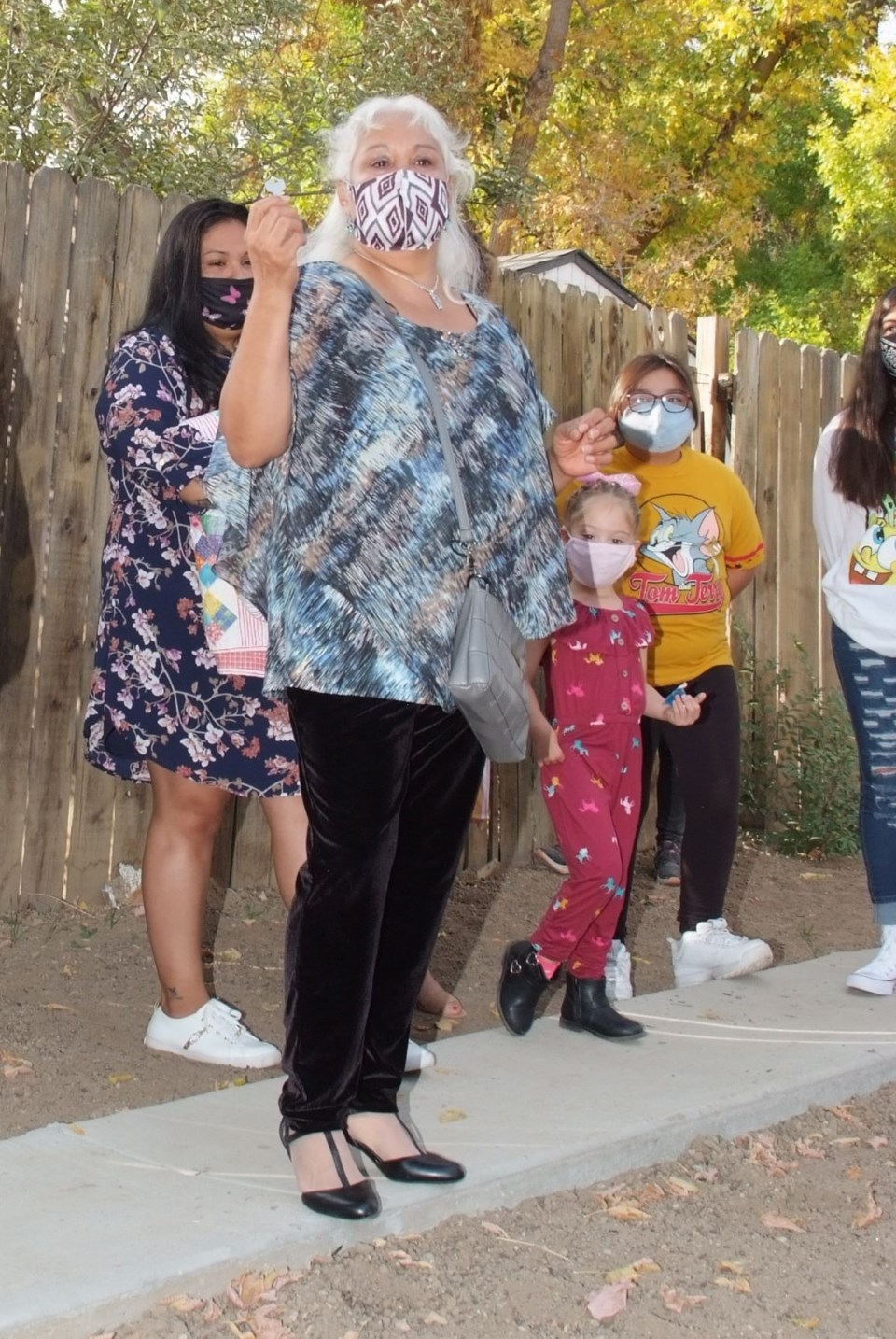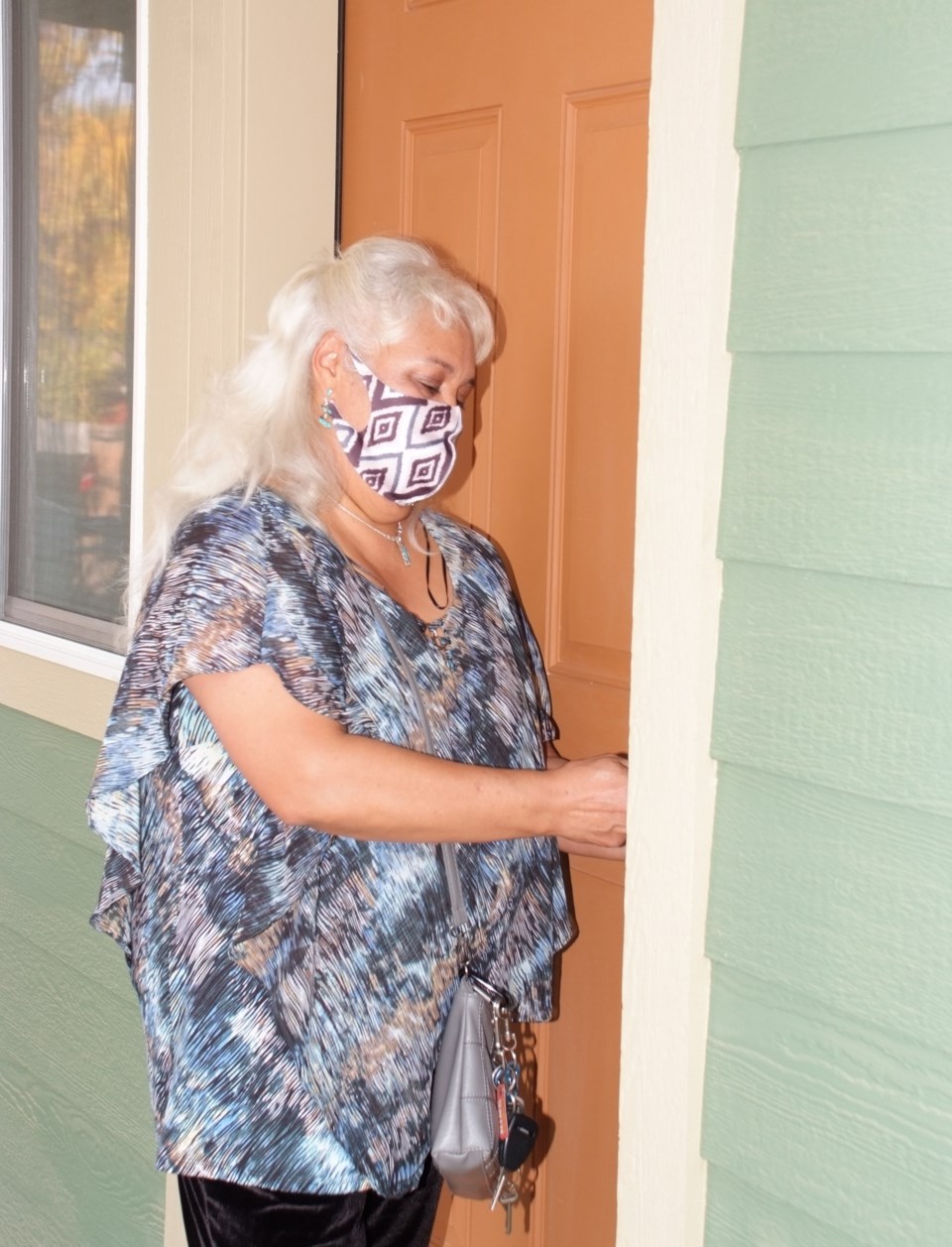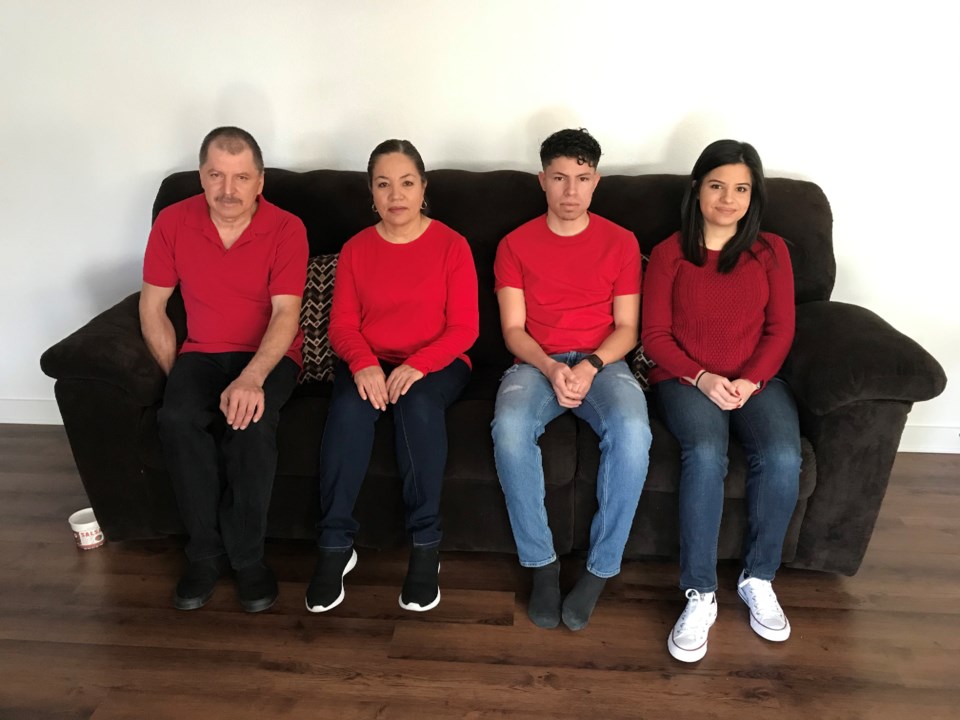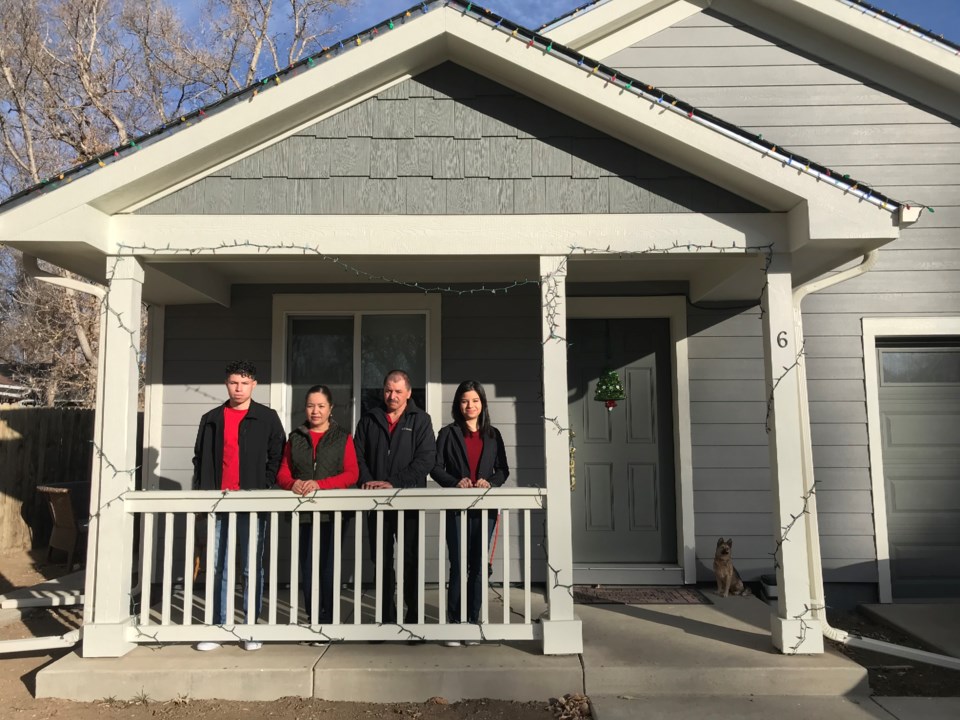Lea esta historia en español aquí.
***
Boulder County has seen housing insecurity increase over the past two decades. According to a report by the Emergency Family Assistance Association, more than 55% of renters in Boulder County are considered cost burdened, paying more than 30% of their income for rent.
In Longmont, Hispanic households are much more likely to face housing problems than individuals of other races, according to a recent community needs assessment by Boulder County, especially a challenge for residents with disabilities and older adults.
For two local Latinx families, owning their own home has become a highlight that has allowed them to celebrate the holiday season in a new house.
Ana Murango moved to the United States from Chihuahua, Mexico, in the 1970s. After living elsewhere for a few years, she and and her finally settled down in Longmont, where she has lived for close to 30 years.
 Ana Murango and her granddaughters celebrate receiving their new home. . By Habitat for Humanity/ courtesy photo
Ana Murango and her granddaughters celebrate receiving their new home. . By Habitat for Humanity/ courtesy photoIn October, Murango and her two granddaughters received the first house she has owned from Habitat of Humanity of the St. Vrain Valley.
“Before I had my own house, I was struggling, swimming against the current, in places that are not your own, one doesn’t have stability or a way to really relax and let go of the worry of thinking what would happen if I lose my job,” she said.
For years, Murango had lived in her parents’ home with her children until they passed away and their property was sold off. After that, she had to look for places to live for a while, until the opportunity came from Habitat for Humanity.
“I always thought, since my children were little, that I would want to participate in the construction sites I would see, but it’s not up to us, we each have our destinies and God knows whether we’ll get it or not,” she said. “For me, it means stability, means being able to relax, as well as keeping on fighting to keep going, life is all about effort and work.”
Murango said she is fortunate to have been able to participate in the program and recognizes this is a blessing for everyone else who might be struggling the way she has.
 Ana Murango opens door to her first home. By Habitat for Humanity/ courtesy photo
Ana Murango opens door to her first home. By Habitat for Humanity/ courtesy photo
“This is an opportunity that I wish all of those who don’t have a place to live could have, if they are able to fix their lives and credits, something God can grant them the way he has granted me and many others like me,” she said.
The mission of the local chapter of Habitat for Humanity is to bring people together to build homes, communities, and hope by building and providing homes to families. In the past 30 years, the organization has assembled over 100 homes, averaging between eight to ten houses per year in Longmont, many of which have gone to Latino families, according to Micaela Chacon, homeowner services support coordinator at Habitat for Humanity of the St. Vrain Valley.
“About 40% of homeowners (we work with) are Hispanic or Latinx,” she said. “We first select homeowners before we build the house, and it might take about a year or a year and a half from the time they apply to the completion of the house.”
Through the help of grants, the help of volunteers and donations from individuals and organizations, Habitat for Humanity has been able to keep the prices of its houses at cost and provide to families at a 0% interest rate, said Chacon.
The nonprofit also offers classes and events to support homeowners through the process, enhance the sense of community and encourage positive neighbor relationships, she said.
Chacon said there is often a misconception about the program giving houses away for free, when in reality there is a lot of work that families put behind the process.
“Homeowners work really hard to put in their volunteer hours. They have their regular work, their families and they also have to make time to volunteer on the weekend or after work so they can comply with the regulations,” she said, adding single parents or individuals must do 250 hours of sweat equity volunteer work, which is often done in the form construction work on their home or on a home for another family, while couples must meet 500 hours.
“(The two families) have been excellent, always willing to work and have been given more than what we asked from them. We are happy to have them,” she said.
Belem Cisneros de Armenta, a Longmont resident of over 20 years, also received her new home in October, right before the holiday season began. “This means a lot because we are together in our own home, this is what we always wanted and we finally were able to make our dream come true… to spend our first Christmas in this house just the four of us,” she said. “We are going to have a very happy Christmas.”
 Ramón Armenta (left) Alexis Armenta (son,), Belem Cisneros de Armenta and Cinthya Armenta (right). By Silvia Romero Solis
Ramón Armenta (left) Alexis Armenta (son,), Belem Cisneros de Armenta and Cinthya Armenta (right). By Silvia Romero Solis
After moving from Chihuahua, Mexico to Longmont in the late 1990s, Cisneros de Armenta has been the sole provider for the past 12 years for her two children, Alexis and Cinthya Armenta, and her husband, Ramón Armenta, who suffers from Parkinson’s Disease.
“We spent days of no sleep, and days during which we barely ate because I work 10 hours a day and my husband couldn’t be out getting the paperwork,” she said of the process to get her home. “I would get home from work at night and would go out to get letters of recommendations and paperwork from the bank, whatever I needed to get, and would get home at 8 at night to make dinner and lunch for the next day, I would go to sleep very late and be up again at 4 a.m. the next day to get to my job.”
She as well as members of her and her husband’s families supported the construction of their house through putting in hours of volunteering work.
“It is not a sacrifice to have worked for my own home, it’s a pleasure,” she said. “We felt very comfortable because we would meet a lot of other families, hear many stories, meet people who had just gotten their homes or were in the process of getting them.”
The house was designed and built to ensure her two children and her husband would live comfortably, she said. “Mainly, the house is more comfortable for my husband, since he sometimes has trouble walking,” she said, adding doors, bathrooms, and the kitchen are designed to allow space for a wheelchair in the future if they need it.
“The difference is that we have more space, too… because our children needed a room of their own, to be more comfortable and less stressed out.”
Cisneros de Armenta said owning a house and getting to where they are seemed impossible at one time and it is something her entire family has continuously been working toward.
“We are people of limited resources, we don’t have any money, and we have struggled to be able to eat every day, to pay the rent,” she said, adding there was a time she didn’t believe she could give her children the opportunity to study and something they have been able to accomplish through hard work and much support.
“Personally, I believed we were never going to get out of that situation… but it's never too late, things are always possible, especially if there are people as amazing as those with Habitat who bless many families and give us this kind of happiness.”
This Christmas, Cisneros de Armenta will be with her husband and children at home, taking care of each other during such turbulent times.
“To the families who are going through what we’ve been through, I want to tell them there is light at the end of the tunnel,” she said. “Perseverance is the only thing you need.”

